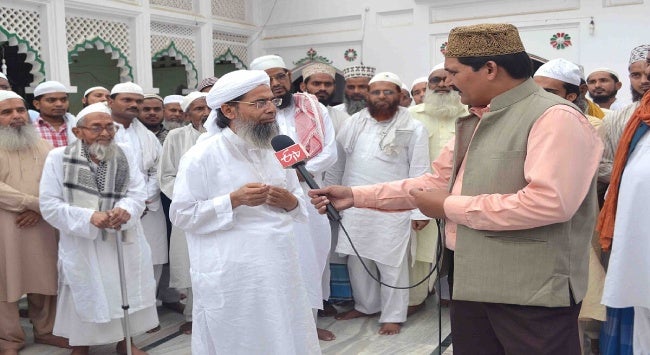Summary
The social costs of war and armed conflict often outweigh their economic impact. These social consequences vary across countries, shaped by institutional values and the nature of each society’s social structure.
Inter-state wars and internal armed conflicts have social costs. They create aggression among people, affect social cohesion and impact the lives of the vulnerable sections of the society. In present times, the social costs of war are higher due to even ordinary people getting involved in fighting due to the deep reach of the media and the increased use of social media. War-related news and social media posts have a psychological impact on many people. More dangerous is the dissemination of loads of unverified news, fake news, incorrect social media posts, rumours and disinformation that thickens, what military scholar Carl von Clausewitz paraphrased as the fog of war, adding to the difficulties in the decision-making process.
Two weeks after the Pahalgam terror attack in which 26 tourists were killed, India carried out a “targeted, precise, controlled and measured” strike on 7 May 2025 on terrorist infrastructure in Pakistan, killing over 100 terrorists. After a brief military action, India and Pakistan agreed to a ceasefire on 10 May 2025. However, political tension between the two countries is palpable. During an address to the country on 12 May 2025, Indian Prime Minister Narendra Modi said that India will now not hesitate to use force against the terror camps in Pakistan, calling it a “new normal” and military action has only been “paused”.
During Operation Sindoor (a vermillion marker of a Hindu woman’s the marital status), codename for India’s military strike, New Delhi presented a secular nationalist narrative. Two female officers led the military operation briefing –one Hindu and one Muslim – and by Indian Foreign Secretary Vikram Misri. This strongly showed that the country could not be divided on communal lines. The strike on terror infrastructure was backed by all sections of Indian society and political parties. However, Music tracks such as Pehle Dharm Poocha (They Asked About Religion First), Ab Ek Nahi Huye Toh Kat Jaaoge (If You Don’t Unite Now, You Will be Slaughtered), Jaago Hindu Jaago (Wake Up, Hindus) and Modi Ji Ab Maha Yudh Ho Jaane Do (Modi Ji, Let The Great War Begin) attracted a good number of audiences. After the Pahalgam killing, in the Indian states of Punjab and Uttarakhand, and country’s capital, New Delhi, some Kashmiris were reportedly harassed and intimidated by some locals.
In Pakistan, military tension with India provided an opportunity for the Army to further cement its position as the sole saviour of the country and its idea. After the confrontation with India, traditional military nationalism has returned to Pakistan. Former Chief of Army Staff Syed Asim Munir has been promoted to Field Marshal, second after Ayub Khan. Also, Air Chief Marshal Zaheer Ahmed Babar Sidhu, currently in his fourth year as head of the Pakistan Air Force, received his second extension. Munir is now an unchallengeable hero of the country and the biggest beneficiary of the confrontation. This situation undermines the country’s already weak democracy.
Pakistan is facing an economic stress situation. Amid the confrontation with India in May 2025, Pakistan received a fresh US$1.4 billion (S$1.79 billion) loan from the International Monetary Fund under its climate resilience fund. Nevertheless, confrontation with India has convinced many in Pakistan to spend more money on defence purchases. The government has allocated PKR270 billion (S$124 million) for armed forces development, which may be significantly revised in the 2025-26 country’s budget, likely to be presented in June 2025. Pakistan’s Planning Minister of Pakistan Ahsan Iqbal said, “It is our national duty to provide the armed forces with whatever they need in this budget to bolster their capacity and defend our country in the future”. An increase in the defence budget will affect expenditure in essential social sectors that need urgent attention. One of the most critical areas to address is securing food for many poor Pakistanis. For instance, the 2025 Global Report on Food Crises, published by the Food and Agriculture Organisation of the United Nations, finds that around 11 million Pakistanis face acute food insecurity.
The question of terrorism remains unaddressed. Pakistan’s Defence Minister Khwaja Asif’s statement in an interview with Sky News and opposition leader from the Pakistan People’s Party Bilawal Bhutto acknowledging extremism in the past “compounds” Islamabad’s credibility problem on terror matters. Pakistan had been on the ‘grey list’ of the Financial Action Task Force (FATF) since 2018 because of “strategic counter-terrorist financing-related deficiencies”. It exited the FATF list in June 2022. However, as Indian media reports, in the June 2025 meeting of the FATF, New Delhi plans to raise terror funding charges against Pakistan to make a case against it for putting it back on the ‘grey list’.
In many cases, societies endure the social costs of war and armed conflict for extended periods. These costs are often unevenly distributed, influenced by each country’s institutional values, the nature of its social structure and the collective capacity of affected communities – especially victims – to process and move beyond their suffering.
. . . . .
Dr Amit Ranjan is a Research Fellow at the Institute of South Asian Studies (ISAS), an autonomous research institute at the National University of Singapore (NUS). He can be contacted at isasar@nus.edu.sg. The author bears full responsibility for the facts cited and opinions expressed in this paper.
Pic Credit: Wikimedia Commons
-
 More From :
More From :
-
 Tags :
Tags :
-
 Download PDF
Download PDF



